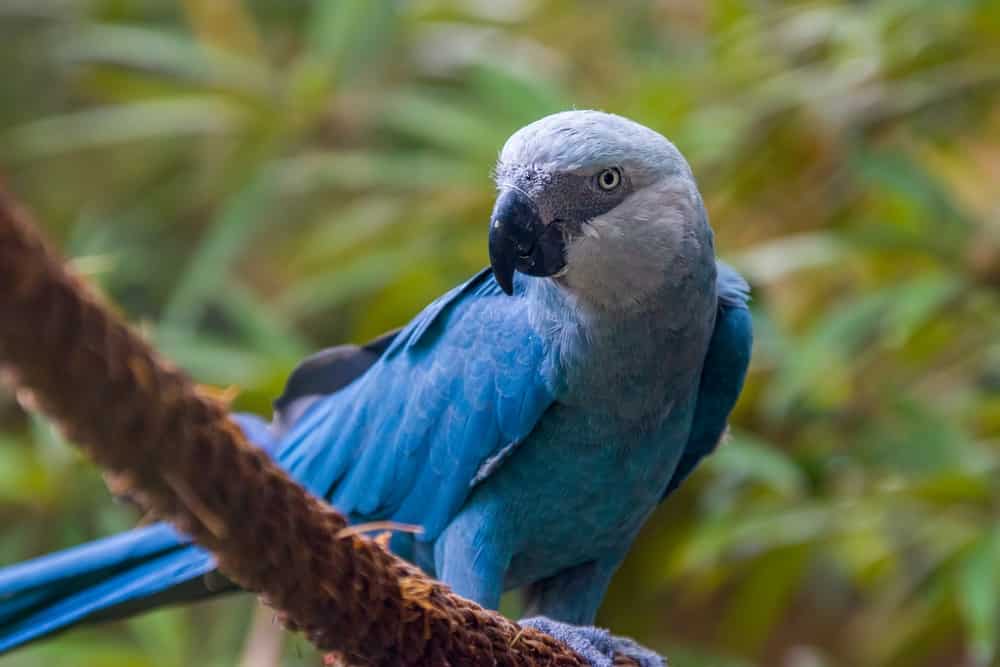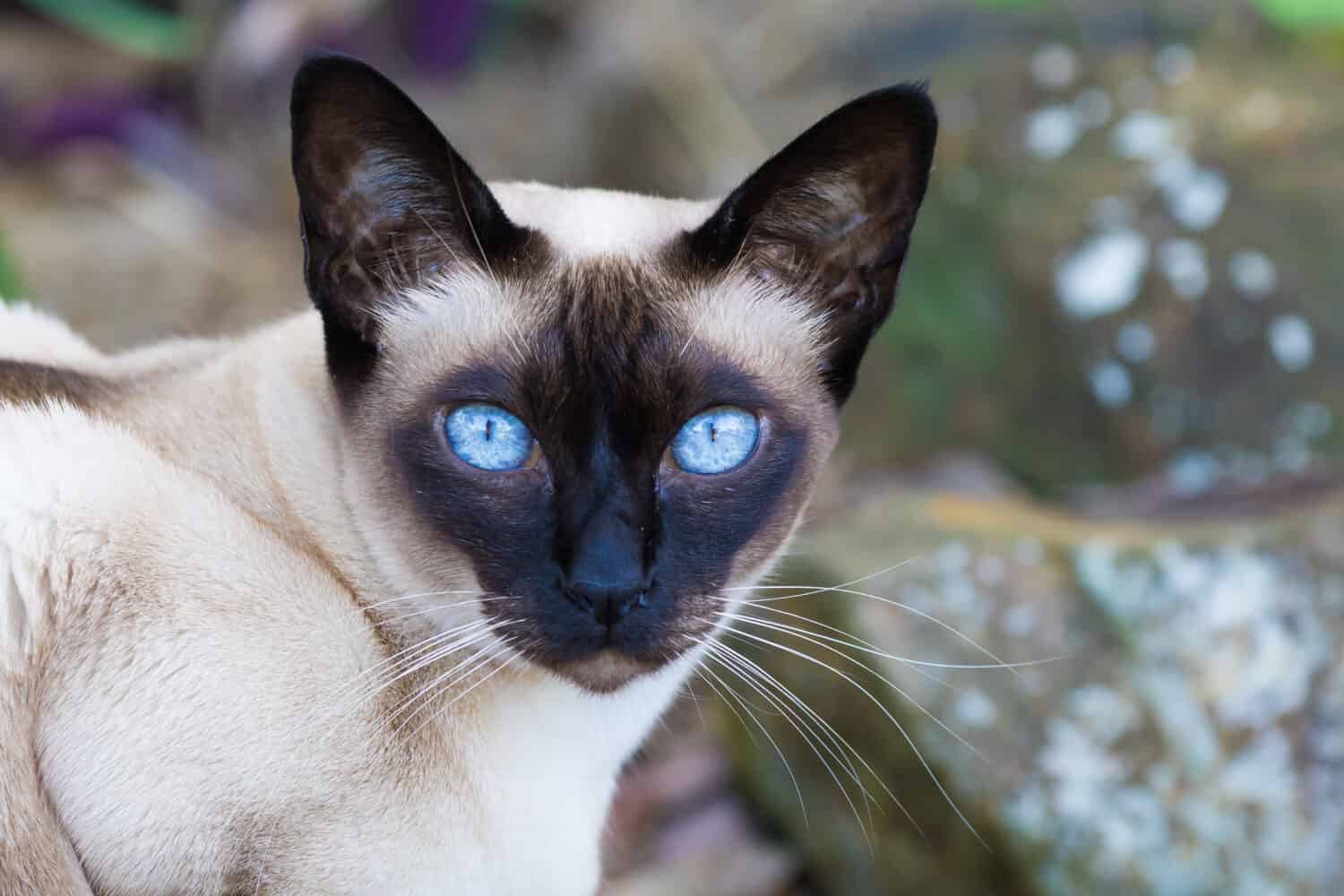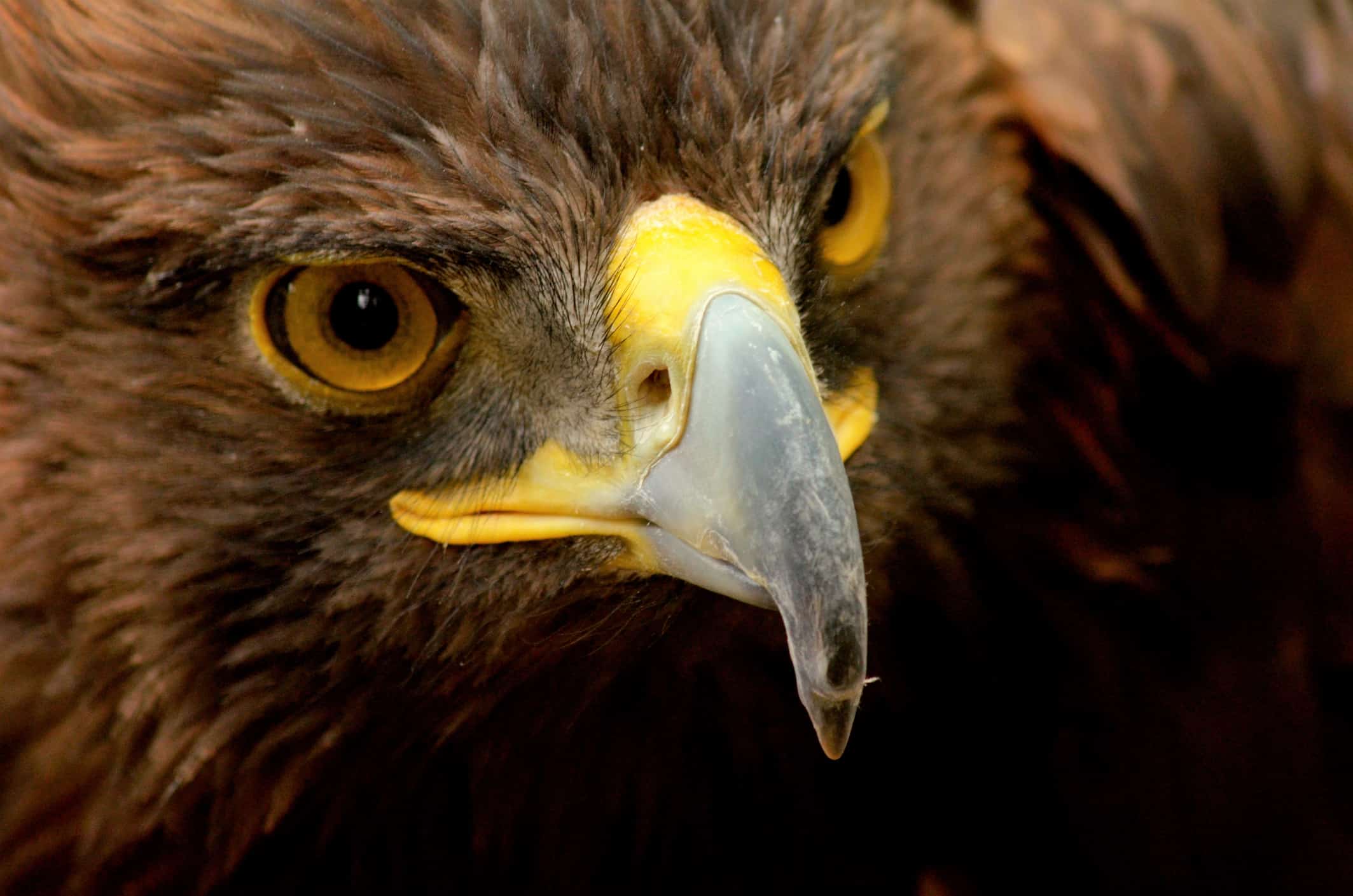Rare animal eye colors fascinate scientists and nature lovers worldwide. Nearly every animal species on the planet possesses a colored iris surrounding the pupil within the eye. The iris (colored part of the eye) is actually a group of muscles that controls the opening and closing of the pupil. The pupil is the hole at the center of the eye that allows light to pass through to the retina. An extension of the brain, the retina is a complex tissue at the back of the eye that captures images to send to the brain for interpretation. Eyes are incredible organs!
What Determines Eye Color in Animals?
Interestingly, wild animals tend to have the same eye color as the rest of their species, while domestic species (and humans) display a wide variety of hues. One scientific report discusses how and why variations in eye color developed among humans and domestic animals. The consensus is that selective breeding created the various eye colors we see today. Selective breeding includes purposeful breeding by humans and natural selection among animals.
Basically, eye colors developed the way they did for different purposes. Some eye colors help animals see at night, while others increase attractiveness to a mate. Some animals have eyes that change color as they grow from baby to adult. Eye color is complicated, but it all comes down to genetics that determine pigment, light scattering, and eye structure (how the eyes and each of their parts are shaped).
What Are Pigments? How Do They Affect Eye Color?
Pigments are substances that produce color in living things. Two pigments affect eye color: melanin and lipochrome. Melanin is the pigment within the eyes, skin, and muscles. There are two types of melanin. Eumelanin produces brown coloration, while pheomelanin produces red coloration. Lipochrome is a pigment that gives fat and oil its yellow color. When these pigments combine within the iris at various levels, they create different colors. Brown irises contain high levels of eumelanin. Green eyes contain more pheomelanin than eumelanin, along with some lipochrome. When the eyes contain no melanin or lipochrome, such as in true albino animals, the eyes may appear red or violet due to light reflection off blood vessels within the retina. However, some animals lacking pigment in the eye have white irises.
How Do Light Scattering and Shape Affect Eye Color?
Sometimes, microscopic structures within the eye or iris change the way light passes through the eye or reflects. The tiny structures can either absorb or reflect more light which causes the color to change.
The iris contains several layers: anterior epithelium, stroma, and posterior epithelium. The stroma is the middle layer made up of cells, fibers, blood vessels, etc. The alignment of the parts of the stroma determines how well (or not) light scatters when it passes through the iris. This arrangement is different from person to person and animal to animal.
Injuries to the eye that affect the stroma and other structures can cause changes in eye color, as well. Diseases and eye conditions, like hyphema (bleeding in the eye) and pigmentary keratitis, can also influence animal eye color appearance and clarity.
What Makes Eye Color Rare?
What is a rare eye color generally depends on what type of animal is considered. For instance, red eyes are relatively common in birds but rare in mammals. Brown and blue eyes are most common in humans, while yellow eyes are common in felines. For the purposes of this article, we will rank eye colors by how common they are across the animal kingdom, without including human eyes. Though, we will discuss the relative commonality of the colors in humans as we go, as well.
Without further ado, let’s take a look at the rarest to most common animal eye colors!
The Rarest Animal Eye Color: Iridescent

Iridescent eyes change color depending on the angle of the observer’s gaze.
©Vinicius R. Souza/Shutterstock.com
The rarest of all animal eye colors, iridescence appears in a few birds, fish, reptiles, insects, and spiders. Scientists agree that animals use iridescence for many reasons though mostly for visual communication, such as which individuals are male or female. However, when it comes to eyes, scientists suspect iridescence functions to either improve vision or limit light absorption. In the case of horseflies and other insects, the iridescence may help provide them the ability to determine subtle differences in colors. On the other hand, iridescent pupils may help animals, such as the common octopus, see better in low-light conditions like the deep ocean.
It’s important not to confuse iridescent eyes with eyeshine. Eyeshine is the result of light reflecting off the tapetum lucidum. This is a highly reflective part of the eye in most animals that allows them to see well at night. This is why your cat or dog‘s eye glow when you shine a light on them! Different animals reflect different eyeshine colors. For example, alligators reflect red, while most cats and dogs reflect green.
Gray/White

Some species of birds have white or gray eyes.
©Danny Ye/Shutterstock.com
One of the least common eye colors in humans, gray/white eyes are also exceedingly rare in animals. In fact, only a few bird species naturally produce white eyes, and most of them only occur as the bird becomes an adult. Some scientists believe this eye color change between juvenile to adult signals to other birds of the species that the individual is mature and ready to mate. White eyes are most commonly found in parrots such as macaws.
Gray eyes are the result of virtually no melanin within the iris, so the observer sees only the structures within. These structures are layered and give a gray appearance.
Green

Another rare eye color, green eyes only exists in a few select species.
©Dudarev Mikhail/Shutterstock.com
The number of green-eyed animals in the world is very small. Lemurs and frogs, along with some cat and dog breeds, have naturally green eyes. Some breeds, such as the Russian Blue cat, are highly prized for this beautiful eye color. Also rare in humans, green eyes result from very low melanin and the addition of lipochrome within the iris. If you’re lucky enough to get a cat or dog with green eyes, you’ve got one of the rarest pets out there!
Black

Animals with an increased amount of melanin in the iris have black eyes.
©Joanne Harris and Daniel Bubnich/Shutterstock.com
Surprisingly to some, several species of animals have black eyes. This animal eye color is more common than you might think! From owls and fish to pandas, seals, and monkeys, black eyes exist in animal species worldwide. Scientists widely agree that black eyes help protect the internal eye structures of daytime hunters from sunburn and help nocturnal hunters see better at night. That’s because black absorbs the most amount of light.
Red/Orange

Red eyes are common among birds, amphibians, and reptiles.
©Nycticorax nycticorax/Shutterstock.com
Many animal species sport red or orange-colored eyes. Some develop this coloration as they age and become mature. This eye color helps animals in many ways, including warding off predators, filtering UV light, and distinguishing between colors. Some amazing red-eyed creatures include the satanic leaf-tailed gecko and night heron. While their eyes may look scary, neither animal is dangerous. However, their red eyes help them hunt more easily.
Blue

Many cat and dog breeds naturally have blue eyes.
©Sallye/Shutterstock.com
Blue eyes are common in both people and animals. Many times, blue-eyed animals are associated with white coats. This is true in Siamese cats and Siberian huskies, but wild animals can have blue eyes too. Blue eyes appear in white tigers, Arctic foxes, and many more!
Interestingly, some reptiles have blue eyes, too. The blue-eyed lucy (BEL) is a leucistic ball python. These snakes are special, fetching as much as $700 per snake! Why? Because despite having no other coloration in their scales, they are not albino. This is a naturally occurring mutation.
Not only that, but even fish can have blue eyes like the blue-eyed pleco.
Yellow/Gold

A great many animal species, both wild and domestic, sport yellow/gold eye color.
©iStock.com/Paco Adame
The second most common animal eye color is yellow/gold. Found among both predators and prey, this eye color can be recognized in species of every category, from mammals to invertebrates!
The most common animals to have yellow/gold eyes are those that stalk prey, such as cats (wild and domestic) and birds of prey. Scientists believe these light-colored eyes both help these predators blend into their surroundings and increase their ability to see well in the daylight.
The Most Common Animal Eye Color: Brown

Most animals in the world, including humans, have brown eyes.
©iStock.com/Kreangagirl
Finally, the most common animal eye color is brown. From massive elephants to the smallest mice, brown eyes range from deep, dark chocolate brown to light, honey brown. Wolves, coyotes, and most dog breeds typically have brown eyes, too. They’re also common among animals like goats, gazelles, and deer.
Brown eyes are a genetically dominant feature. Some scientists believe this is due to the potential problems associated with recessive genes, like those required for blue eyes. In the wild, these issues would likely lead to an early death and not be passed on.
Not to mention, brown eyes blend in with the natural environment better, which allows both predators and prey to live more successfully. For instance, a rat with bright blue eyes and a light coat is more noticeable in the leaf litter along the forest floor than a dark brown rat with brown eyes. The light-colored rat is more likely to be spotted by a bird or snake than the dark one.
Animal Eye Colors Summary Table
| Animal Eye Color: Rarest to Most Common | Animals That Commonly Have This Eye Color |
|---|---|
| Iridescent | horsefly, dragonfly, other insects, and spiders |
| Gray/White | Macaws, African gray parrot |
| Green | Ring-tailed lemur, Egyptian Mau |
| Black | Barn owl, Eastern indigo snake |
| Red/Orange | Emus, Red-eye tree frog |
| Blue | Siamese cat, Siberian husky |
| Yellow/Gold | big cats, Golden eagle |
| Brown | Most animals and people |
The photo featured at the top of this post is © WildlifeWorld/Shutterstock.com
Thank you for reading! Have some feedback for us? Contact the AZ Animals editorial team.






